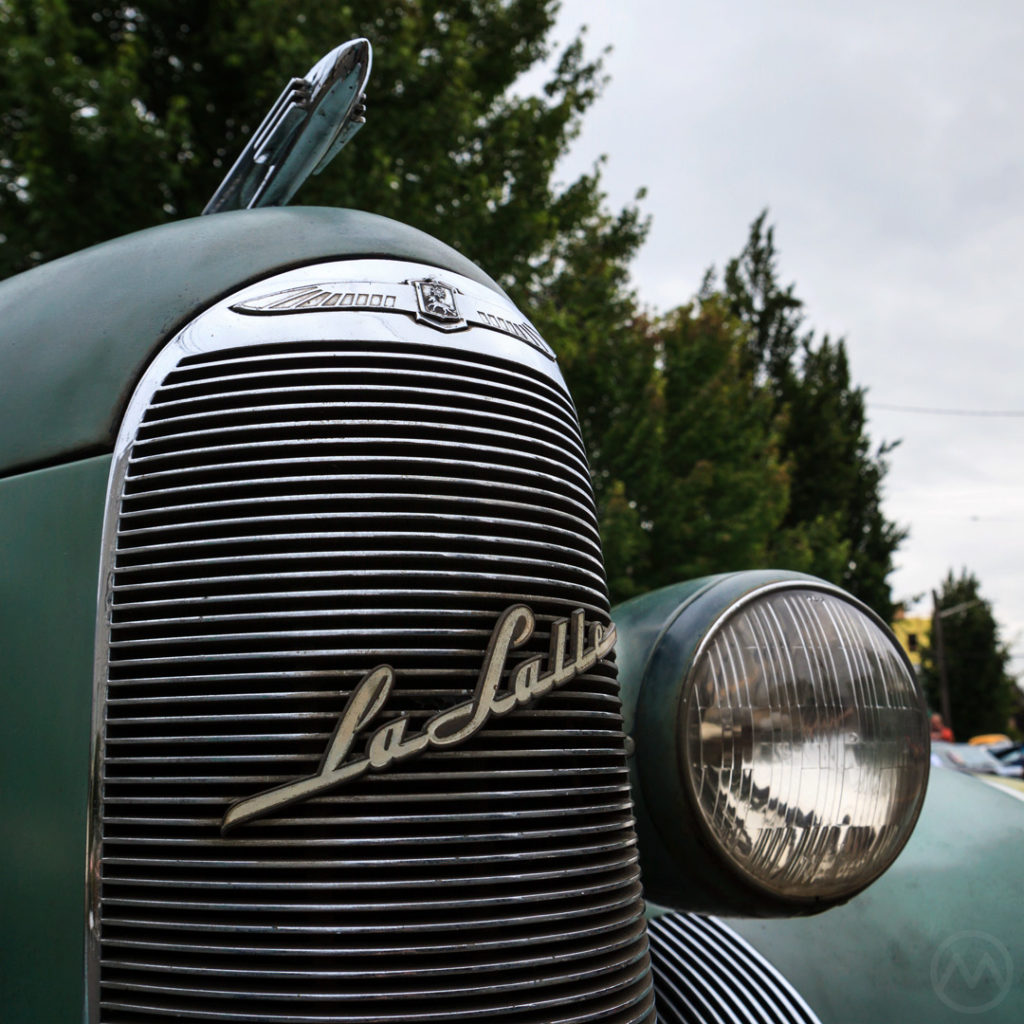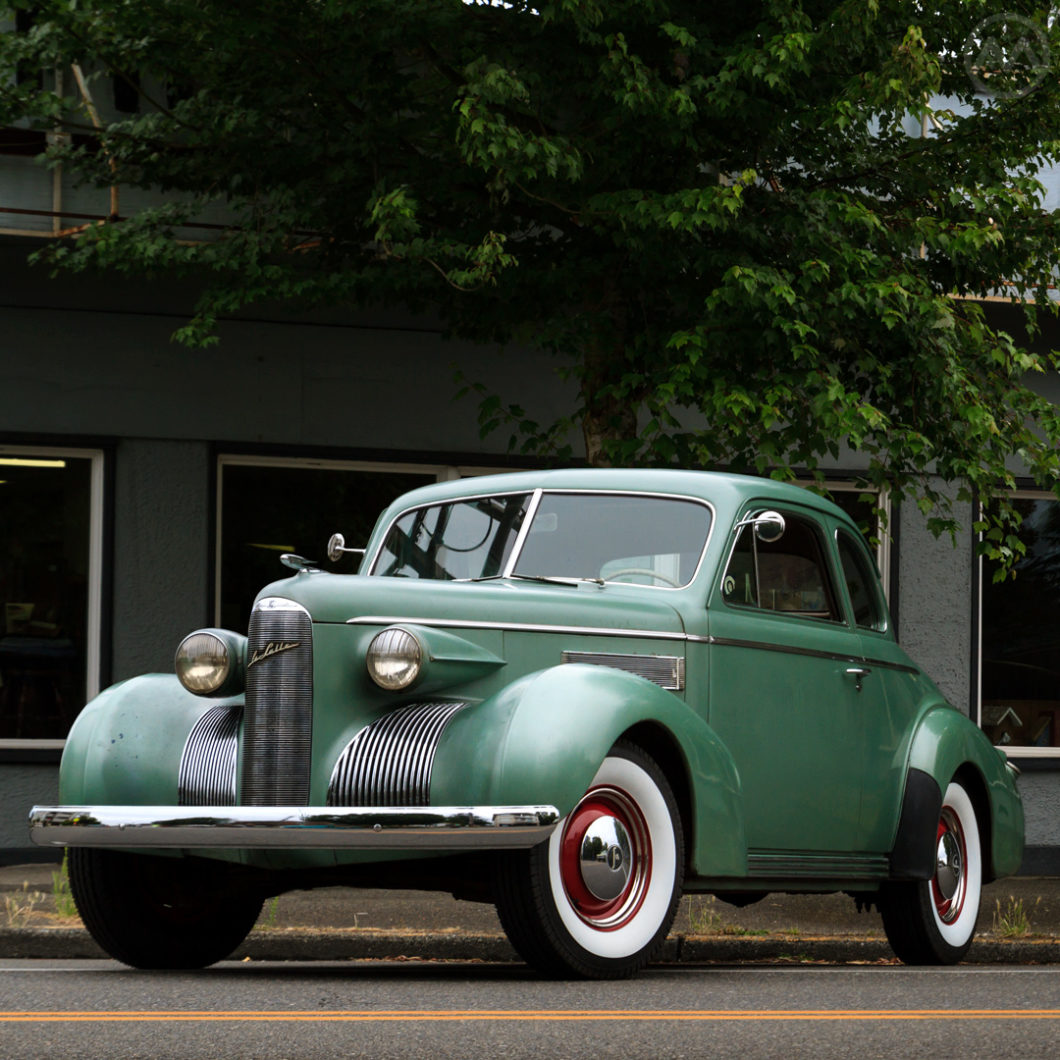Recollections of the LaSalle were, for many years, as hazy with nostalgia as the Edward A. Wilson paintings that were used to advertise the Cadillac companions from 1927-33.
Born of the boom times of the 1920s when GM genuinely offered a car or every purse and purpose (in the words of Alfred P. Sloan), the original LaSalle played a key role in creating GM’s modern styling and design infrastructure.
Later on, it helped Cadillac ride out the depression and a decade of constant change and turmoil in which luxury cars hung on precariously and fast-moving design trends completely reshaped automobiles. By the time of the 1939 LaSalle seen here, the cars had evolved considerably – but the end was near.
Ultimately, LaSalle’s cancellation had more to do with economics than the cars themselves – always acknowledged as well made. A product of the vibrant but economically-handicapped zenith of Streamline Modere, the thirties LaSalles were always going to be a nostalgic favorite – beautiful relics of a vanished time and conceived in what must have felt like an alternate universe by the 50s.
The Lives of LaSalle
On the market for just 13 seasons, there were three LaSalle eras.
The first began in March, 1927, when the original series 303 LaSalles debuted. Cadillac GM Lawrence P. Fisher (of Fisher Body family fame) spied custom Cadillac designs at California dealer Don Lee, and hired Lee’s hot-shot designer – one Harley J. Earl – to style a new Cadillac companion.
Earl was already well-known, having personally styled cars for celebrities like Tom Mix. It was this work that led Lee to buy out Earl’s father’s coachworks to secure Harley’s talents.
The LaSalle was supposed to be a smaller and sportier Cadillac – using Cadillac V8 power but with less formality and more speed. It would be priced between Buick and Cadillac.
Earl cribbed the design from several of Marc Birkigt’s Hispano-Suiza H6s, cars few Americans had ever seen (but more than a few Hollywood people had). The design wasn’t a direct copy but it owed much to the Hispano.
Introduced mid-year, it was a style sensation and an instant success and led directly to Earl’s “Art & Colour” section, effectively a way for GM to do what Don Lee had done, but on a much bigger scale.
The boom of the twenties seemed unlimited and the success of the LaSalle (and the Pontiac, the earlier companion to Oakland) soon conjured up two more companions – Buick’s Marquette and Oldsmobile’s Viking. But the depression quickly put an end to such plans, and nearly took LaSalle with it.
The ‘27-’33 LaSalles were lighter, smaller, faster Cadillacs; but in 1933 just 3,381 cars were built and GM nearly axed the brand. But Cadillac needed volume. If the LaSalle was to continue, it’d have to be cheaper to produce and to buy – and that’s how the ‘34 LaSalle was prepared – based on the Buick/Olds B-body. An Olds straight eight replaced the former Cadillac V8 and prices were slashed by nearly 40%.
Closer to Cadillac
The cheaper ‘34-’36 cars were much better sellers. In the meantime new Cadillac GM Nicholas Dreystadt, who took over from Fisher in mid-1934, created the very successful B-body “Cadillac 60” in 1936.
To bring LaSalles in a little closer, 1937 would bring a kind of hybrid formula of the first two eras – 1937 LaSalles were a smaller “60,” a B-body like Buick/Olds but with Cadillac’s V8 returning. The 322-cid V8 was still called a “Monobloc” as in days of old but actually new in 1936, though it was a sidevalve engine. The 322 started out in the “60” and grew larger in the 1937-38 Cadillacs, but stayed a 322 in the “junior” LaSalle.

This hybrid of the two types of LaSalle resulted in the make’s best-ever year, but it was not to last very long. A sharp recession in 1938 tanked LaSalle sales, though they recovered a bit in 1939.
The problem, really, was Cadillac’s own 60, which gave way to the series 61 and also birthed the 60 Special. The LaSalle was now very close to an established and visually-similar Cadillac, also styled by Earl & Co., and the “real” Cadillac was only about $200 pricier if you stuck to the lower end cars.
The LaSalle wasn’t different enough to make the argument – although in 1940, the more expensive LaSalles (Series 52) did have mostly unique styling once again.
This is a 1939 LaSalle Coupe, the lowest-priced LaSalle of that year and one of ~23,000 built that year. The B-body roofline is a giveaway to its relationship with its corporate siblings. The 60 gave way to the 61, which was temporarily dropped in 1940 only to replace the LaSalle as the base Cadillac in 1941.
The End
The decision to axe LaSalle came late – there were already mock-ups of ‘41 LaSalles, but the make was all done. In the postwar era, there were many times when designers and enthusiasts who’d grown up with the LaSalle tried to revive it – but the case was never quite there, just as it hadn’t been in 1941.
By the time of the 1955 LaSalle II concept cars, Cadillac could sell everything it could build – there wasn’t any need for a LaSalle. The last possible revival occurred in 1975, when LaSalle was considered, and rejected, as a possible label for the first-generation Seville.

